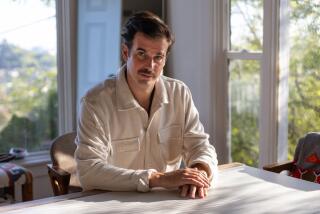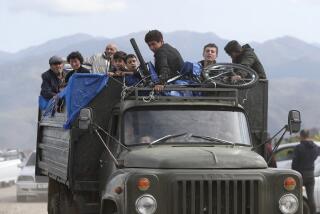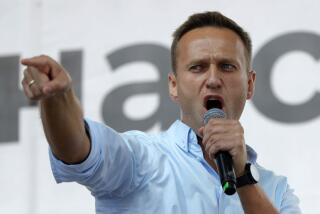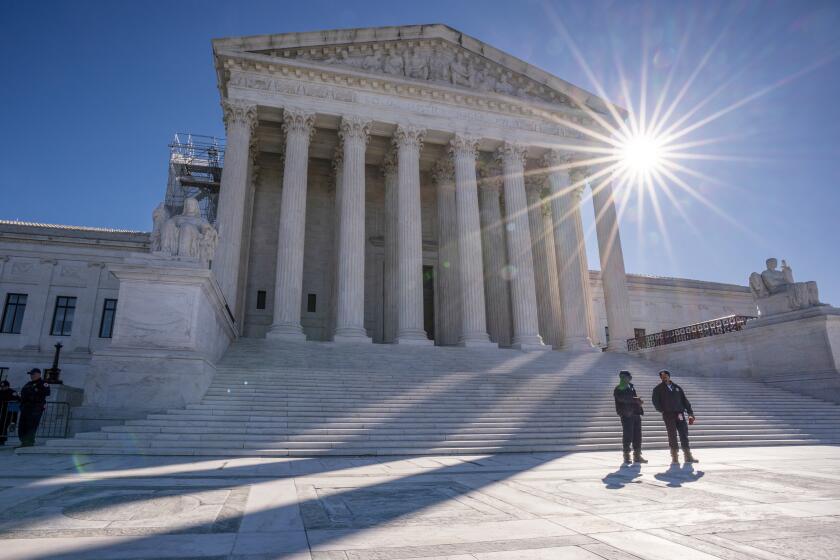With Stepashin Appointment, a Warning Shot
- Share via
MOSCOW — Russians know Sergei V. Stepashin as a military man who has more than once called out troops against his countrymen.
In the popular mind, Stepashin is blamed for two of Russia’s most shameful military disasters: the war against separatist Chechnya that killed 80,000 people, and a bungled raid against Chechen hostage-takers in 1995 that left more than 100 dead.
He is also known to be fiercely loyal to President Boris N. Yeltsin, whose decision to name him prime minister was seen as a warning to potential rivals.
“It’s crystal clear that what Yeltsin is doing is installing loyalists in positions of power--loyalists with command of military forces,” said Alan Rousso, director of the Moscow Carnegie Center. “Right now, the country is heading toward a constitutional crisis, and by putting in someone like Stepashin, he’s suggesting that it could be decided by force.”
Stepashin has a degree of grace and public ease that belies his warmongering reputation. He is quick with a smile and has a pinkish, almost delicate complexion and a chubby face. The combination has earned him the sobriquet “the red-cheeked hawk.”
Little is known of Stepashin’s political or economic philosophy. But he has served at one time or another in nearly all of Russia’s so-called “power ministries”--the Security Council, the Interior Ministry and the intelligence services--which gives him unrivaled standing with the military and law enforcement.
For most of his career he served with the Interior Ministry troops, a force of 200,000 responsible for domestic law and order. In U.S. terms, the Interior Ministry more or less combines the functions of the FBI, the National Guard and local police.
Stepashin’s long military career makes liberals nervous. But he’s not embraced by hard-liners either. They remember he sided with Yeltsin in 1993, when the president called out tanks and troops to settle his differences with opposition lawmakers.
“He faces suspicion on both sides,” said Sergei M. Rogov, director of the USA-Canada Institute in Moscow.
Son of a Soviet Military Man
Stepashin was born in 1952 in Lushun, China, a city also known as Port Arthur, where his father was serving in the Soviet navy. He trained at an academy for political commissars and enrolled after graduation in the Interior Ministry special forces.
In the 1980s, as the Soviet Union was disintegrating, he was sent to put down unrest in a number of trouble spots: ethnic violence in Uzbekistan and Azerbaijan, separatist wars in the enclaves of Nagorno-Karabakh and Abkhazia.
In 1990, he was elected to the Soviet parliament from the Leningrad area, and became chairman of its committee on defense and security.
Stepashin had little time to become a politician. In August 1991, when Communists instigated a coup against Soviet President Mikhail S. Gorbachev, Stepashin quit the Communist Party and rallied to Yeltsin’s side, helping organize the defenses. When it was over, he began an investigation into the KGB, earning points with anti-Communists. Yeltsin rewarded him by appointing him deputy security minister. Stepashin took Yeltsin’s side again two years later, supporting his decision to call in tanks to dislodge opposition lawmakers who had barricaded themselves inside the parliament building. He was rewarded by being appointed to the reconstituted KGB, becoming the agency’s director in March 1994.
Later that year, Stepashin played a central role in deciding to send troops to put down separatists in Chechnya. He supported the intervention, saying it would be a simple operation that would be over in a matter of weeks. Instead, it lasted 21 months, killed 80,000 people and destroyed the military’s morale.
Russians blame Stepashin for poor intelligence assessments that underestimated support for the separatists and overestimated Russian military strength. They were also incensed by his covert efforts to arm pro-Russian Chechen fighters, who failed miserably against the separatists.
Perhaps Stepashin’s most public humiliation came in June 1995, when a group of Chechen fighters staged a hostage-taking raid into southern Russia, seizing 1,000 hostages at a hospital in the town of Budyonnovsk.
Dozens died in the fighting. After a four-day standoff, Stepashin ordered troops to storm the hospital. In the confusion that followed, dozens more died and the raiders escaped back into Chechnya with about 100 hostages, whom they later freed. In the end, between 100 and 150 people were left dead. Stepashin took the blame, and resigned in disgrace.
Scandal Provided an Opportunity
Stepashin’s comeback didn’t take long. A few months after he was fired, Yeltsin quietly appointed him to a low-profile paper-shuffling job. Then, in July 1997, when a former justice minister was filmed cavorting with prostitutes in a mafia-linked bathhouse, Yeltsin named Stepashin to the job and ordered him to clean house. Less than a year later, he was named interior minister, making him the country’s top policeman.
Rogov, of the USA-Canada Institute, says that Stepashin’s mistakes may have made him a better leader.
“His reputation is stained by his involvement in Chechnya, though he seems to have learned his lesson,” Rogov said. “I think it was personal turmoil for him too. . . . One cannot claim he was as thick-skinned as other people at the time.”
But for Yeltsin, Stepashin’s reputation is probably his most important asset.
“Yeltsin is sending a signal to the country at large and to the [parliament] in particular,” Kremlin analyst Andrei A. Piontkovsky said. “Considering the president is at his lowest popularity in years, it’s very important for him to have as premier his most loyal ally, who also controls the power structures.”
More to Read
Sign up for Essential California
The most important California stories and recommendations in your inbox every morning.
You may occasionally receive promotional content from the Los Angeles Times.









